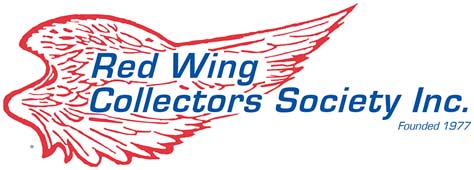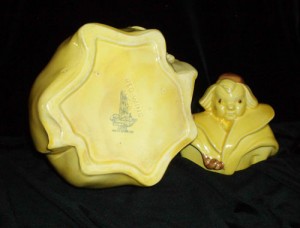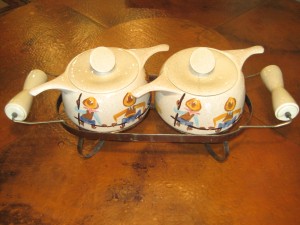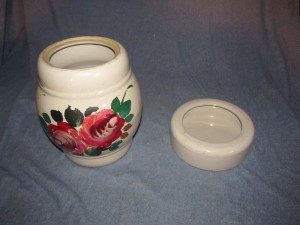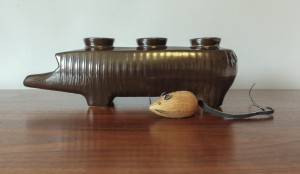 Question:
Question:
Hello Experts,
I have read about Red Wing Ceramastone and the Pig Triple Candleholders here at your wonderfully informative site and have a follow-up question.
Original link: http://www.redwingcollectors.org/ask_the_experts/dinnerware/candle-holder-with-red-wing-sticker
I have attached a few pictures of the three (!) pigs I have recently acquired. You will notice the two brown pigs have different colors of clay (one red, one white) and onsequently the decoration shows differently -do you know why that might be? (fyi, the beige pig has red clay too) I am curious to know what the different colors of clay are on the dinnerware is. The red clay under the beige looks great in the detail and the white clay under the brown looks great, but the red clay under the brown is much plainer.
And do you have a current value for these guys? I do not collect Red Wing myself and plan to sell them and would like to know a fair price.
Thanks so much for your time!
Karen
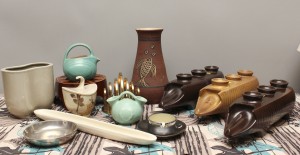
Answer:
Sorry, I don’t have any information about different types of clay used to make the Ceramastone candleholders. The photos are good but I don’t see anything that
convinces me the clay used to make them is appreciably different. One brown pig appears to have a lighter coating of glaze and thus the “ribs” show through; the other brown pig has a heavier coating of glaze so the clay is completely covered. Can’t really tell much from th3 “feet” in the photo because there are other colors on the foot surfaces as well.
Red Wing literature stated that Ceramastone was made with “improved stoneware”
clay. “It combines the basic materials of stoneware, yet we remove the impurities and fire at extremely high temperatures (2200 degrees)”. There could be slight differences in color between batches of clay, or perhaps the high firing temperatures had some effect on the color where unglazed clay was exposed. Do the candleholders have
approximately the same weight? If not that would be a good clue that the clays are not the same.
Ceramastone triple candleholders are worth around $50 each in excellent condition. Dark brown is the most common color; the other colors (Adobestone tan, Charstone Bleu blue and Heatherstone Orange orange) are worth $10 to $15 more.
Larry
